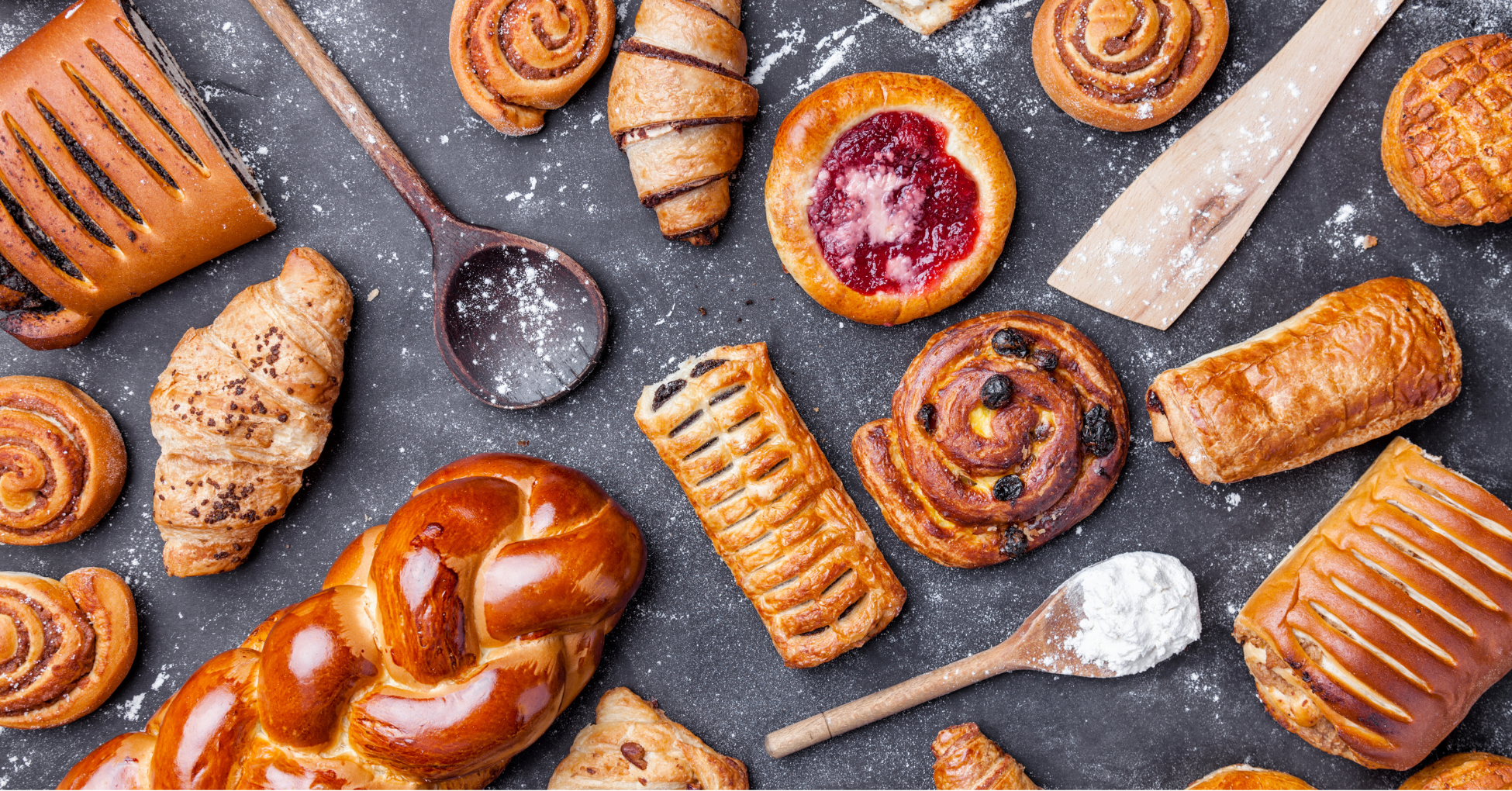The sheer amount of pastries available is impressive, but there are six main types of pastry. These are shortcrust, flaky, puff, filo, choux, and hot water crust. The main ingredients tend to be the same or similar for each – a mixture of flour, water, and fats such as butter mixed together to form a dough, used as the basis of many sweet and savoury treats.Once the pastry dough is formed, it tends to be rolled out thinly to use in baking, depending on the type of pastry in use. Pastries like hot water crust use different methods to form the finished product.
Shortcrust pastry
Shortcrust is the type of pastry used in most recipes, due to its forgiving nature. It requires a fairly simple recipe, and tends to be quite foolproof, making it one of the most common pastries used today. It’s thought that shortcrust pastry was invented in Venice, with the first recipe being recorded in the 18th century.To create a simple shortcrust dough, simply mix flour, butter, and salt, adding water to bind the mixture together. It can be mixed either by hand or by using a food processor or stand mixer; mixing the flour and fat together at the start inhibits the formation of gluten, leaving you with a ‘short’, or lovely crumbly, tender pastry.The general rule of thumb is that you’ll need half the amount of fat to the amount of flour, e.g. for 200g flour, you’ll need 100g butter. As with most pastry, try to avoid handling it as much as possible, so as to prevent the butter from melting. You should try and chill it before using it to bake. Remember to add the liquid gradually – the less liquid your pastry has, the more buttery and crumbly it will be.
Flaky pastry
This particular variety is characterised by the flakes of pastry achieved through lamination. It can be an effort to make but is more forgiving than puff pastry. It has a higher ratio of fat to flour than shortcrust, with the butter being incorporated in stages, a little bit added after each fold. It can sometimes be called rough puff pastry and is a little easier than its more difficult companion.The flaky layers are created by shard-like pieces of butter in the dough melting in the oven, releasing steam, which makes the layers puff up. The pastry expands when cooked due to the number of layers, leaving you with a beautifully crisp and flaky finish.To create the ideal flaky pastry, layers of dough and fat are rolled and folded together. As with most pastry, it’s best made in cool conditions, and should be chilled after making and before being used so as to prevent the fat content from leaking out during cooking. The most rustic and one of the simpler doughs, flaky pastry is a favourite to use in both sweet and savoury recipes.
Puff pastry
Puff pastry is notorious for being one of the most difficult pastries to master. It’s time-consuming to create the perfect puff, but your efforts will be worth it in the end when you bite into a perfectly crisp pastry. It’s thought to have been invented by a French baker, Cladius Gele, in 1645.
A dough of flour, sugar, salt, and water is rolled out into a rectangle, and the butter is layered on top. The dough is then folded around the butter, a process known as lamination, before being rolled out and folded repeatedly to create multiple layers. The dough should be chilled between each lamination so as to prevent the butter from becoming too warm and melting.
Careful temperature control is needed at all times to prevent it from merging with the dough. It’s important to chill the butter and dough at all times, so that the gluten is allowed to relax between roll-outs. During cooking, the moisture in the fat evaporates, causing lift and creating delicate layers; the melted butter adds a crispness to the pastry. Puff pastry tends to be used for Danish pastries.


